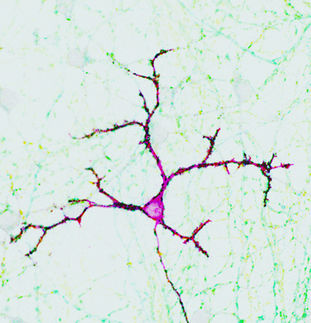Multiple Contacts Are Key to Synapse Formation
Advertisement
Multiple synaptic contacts between nerve cells facilitate the creation of a new contact, as neuroscientists from the Bernstein Center Freiburg and the Forschungszentrum Jülich report in PLoS Computational Biology. An integral mechanism of memory foundation is the formation of additional contacts between neurons in the brain. However, until now it was not known what conditions lead to the development of such synapses and how they are stabilized once created. By studying mathematical models, the scientists found a simple explanation for how and when synapses form – or disappear – in the brain.
The scientists investigated the hypothesis that synapses between nerve cells strengthen if they are active in quick succession. This consolidates memory. The team used theoretical computer models to determine what conditions need to be present for synapses to form – or disappear. Until now it was not known how it is decided on the level of individual nerve cells whether a connection with another neuron will be formed or not. The problem is that a single cell has no access to information concerning whether a synapse will contribute to the establishment of a particular memory.
Dr. Moritz Deger from the Bernstein Center Freiburg and his colleagues have found a simple mechanism which allows them to explain the formation of synapses: If one nerve cell is already connected to a second cell by several synaptic contacts, all of the contacts work together to stimulate the latter cell. This means that under these conditions the individual contacts cooperate to form synapses. But synapses will form and remain only if the neurons become active in the right order; otherwise they will disappear again. This order in cell activity must be measurable for the synaptic contacts, and indeed, physiologists have already found chemical compounds within the brain that might play this role.
As the scientists from Freiburg and Jülich report, their mathematical model can explain the frequency of synaptic connections observed in experiments. This is a strong indication that they have discovered a long-sought mechanism for memory formation.




















































